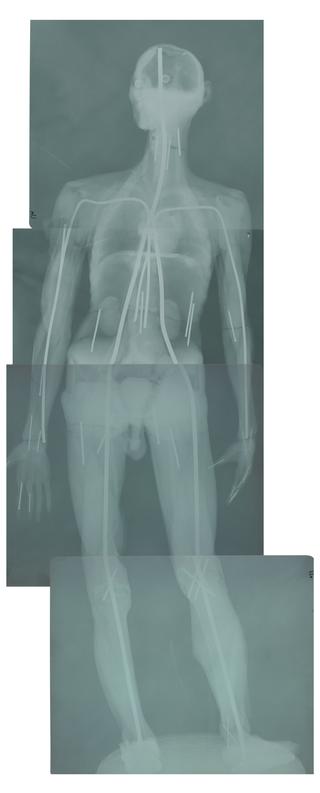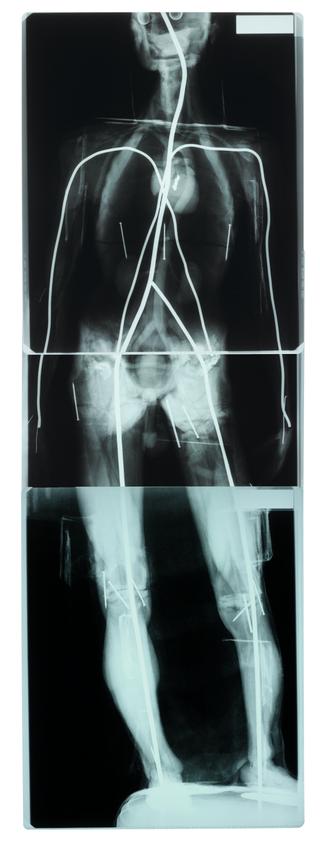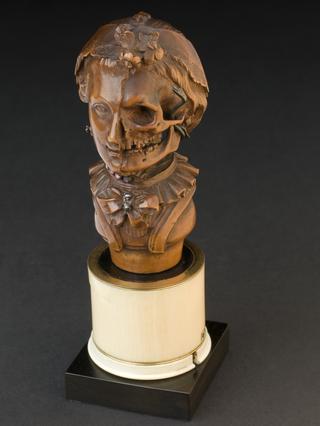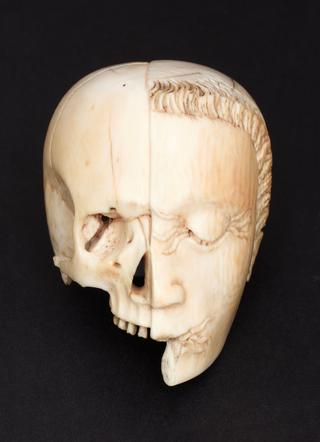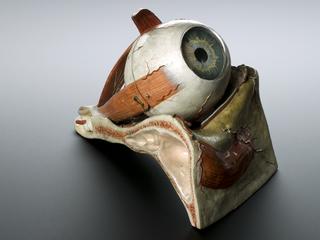
Human skin tattooed with wreath framed bust of soldier, badge and anchor, French, 1850-1920, purchased from La Valette in 1929
Tattooed on to human skin are naval symbols including an anchor and the image of a soldier with the word “Legion” above it. This may suggest the person was in the French Army or the French Foreign Legion. The skin was purchased by one of Henry Wellcome’s collecting agents, Captain Johnston-Saint, in June 1929 from Dr Villette, a Parisian surgeon. Villette worked in military hospitals and collected and preserved hundreds of samples from the autopsies of French soldiers. In the late 1800s, tattoos were often seen as markers of criminal tendencies, or ‘primitiveness’. Medical men tried to interpret common images and symbols. Tattoos were also used as a tool for identification, a practice that continues today.
Details
- Category:
- Anatomy & Pathology
- Collection:
- Sir Henry Wellcome's Museum Collection
- Object Number:
- A543
- Materials:
- skin, human
- Measurements:
-
overall: 411 mm x 331 mm x 41 mm,
- type:
- human remains and tattoo
- credit:
- Wellcome Trust
